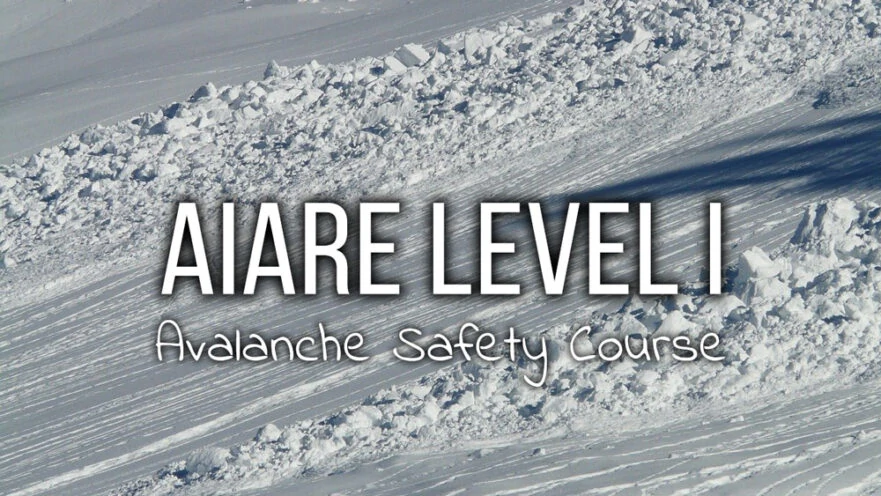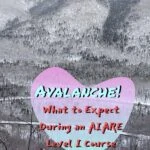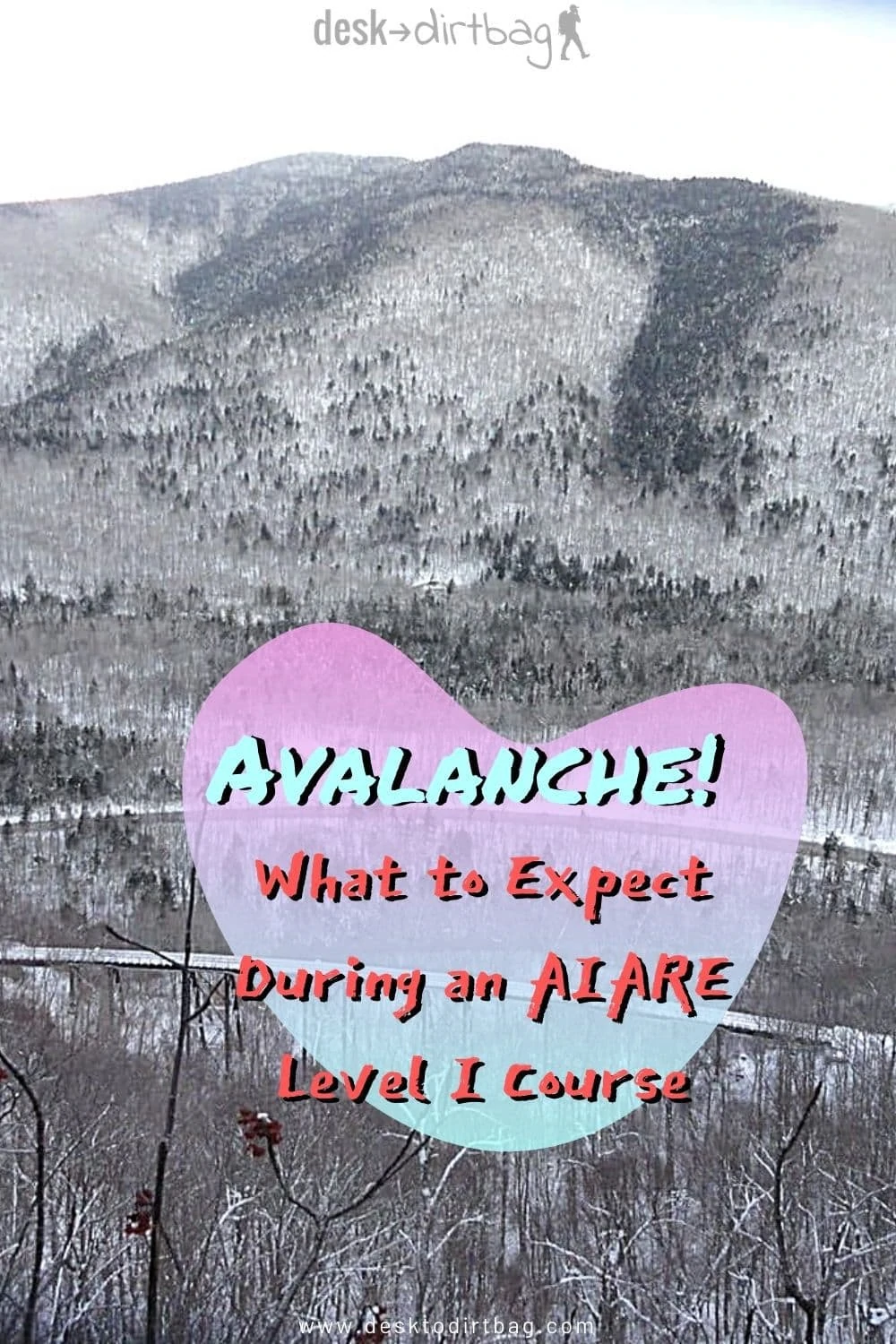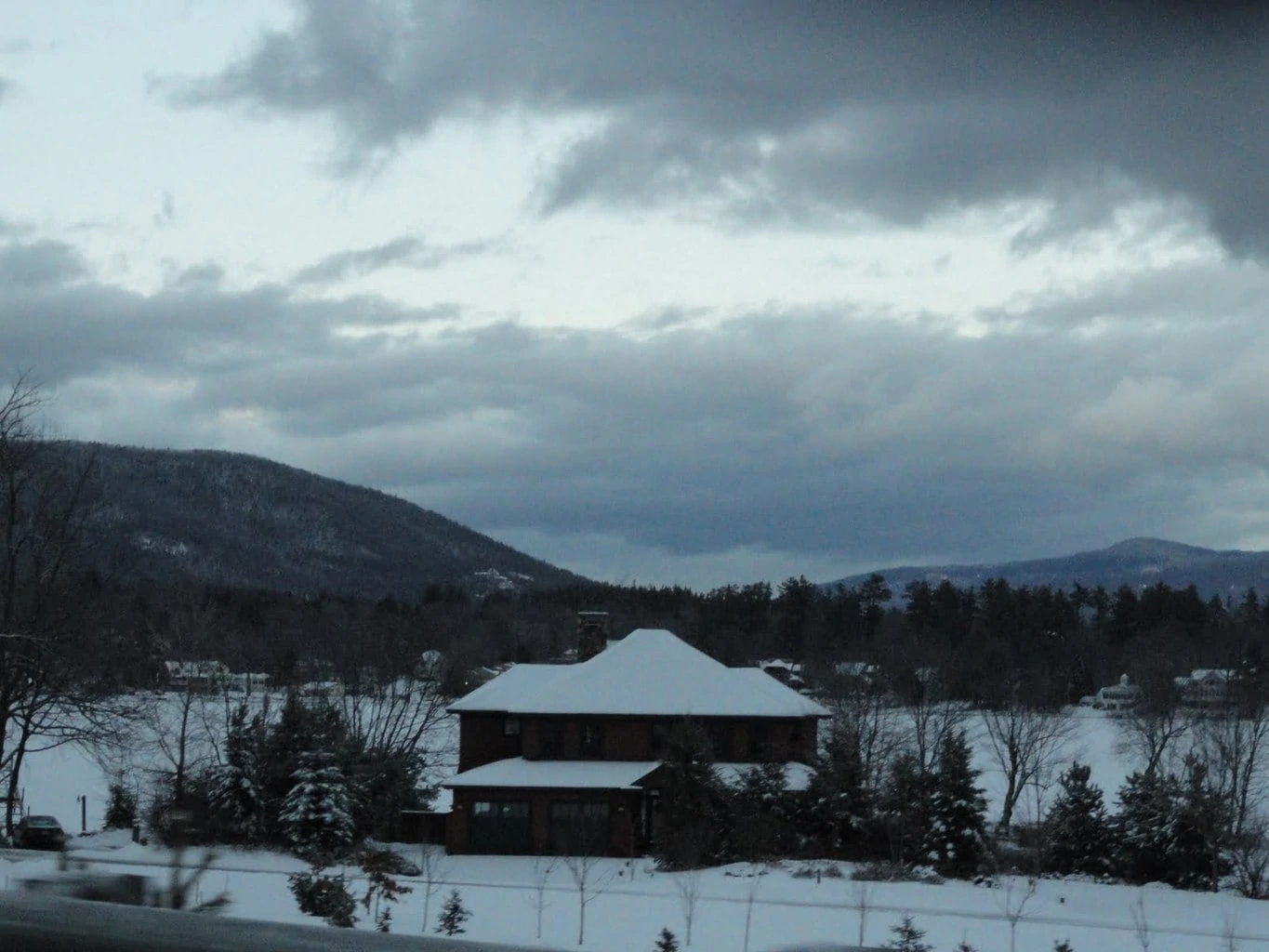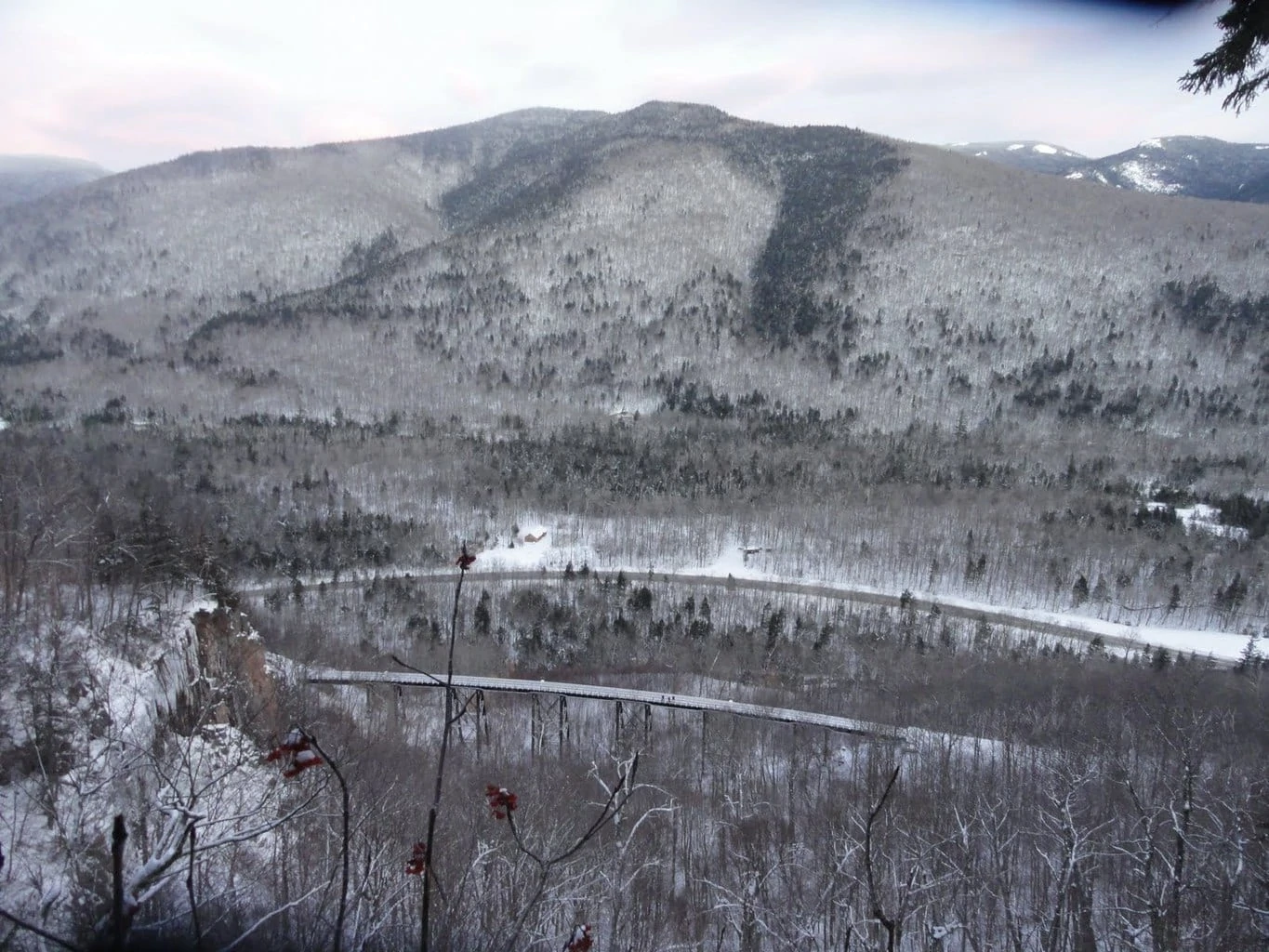I headed back up to New Hampshire for the third time in the past few months, but this time it was for an AIARE Level 1 avalanche safety course. The course was organized and financially supported by the Potomac Mountain Club, our local climbing club in Washington DC.
The course appealed to me because this course was to focus more specifically on avalanche education and awareness for mountaineers (rather than backcountry skiers) and helped me better understand the complexities of traveling in the alpine environment.
While the weather conditions were not ideal for the course, we still got a lot of value out of it, and I can definitely recommend the White Mountains of New Hampshire as a great destination for those on the East Coast who want to learn more about avalanche safety, it is also a great destination for ice climbing!
This AIARE Level 1 Course in New Hampshire was a three-day-long course, each involving basically full days of both “classroom” time and field time.
AIARE Level I Avalanche Safety Course
Trip Report Written by Lucas F of PMC
When Lora, Sameer, Ryan, Eric, and I stepped outside the Manchester airport Thursday, March 23, 2012, we knew this would not be the avalanche safety course we expected. The temperature must have been at least in the high 60s and not a flake of snow in sight.
The drive north to Conway, NH was no better.
The lower mountains were bare and our glimpses of Mt. Washington showed only sparse patches of snow. At this point, it seemed much of the gear in our packs would not see use. Late that night we pulled into Merrill Farms Inn, a quaint but not small, lodging establishment on the south end of North Conway.
The loft we reserved was spacious, nice, and a great value. Two double beds up top, and a queen and sofa bed down below. Breakfast was included and fit the friendly atmosphere of the place with your standard hot and cold cereals, toast, English muffins, home-made muffins, and home-made maple butter. We filled up every morning.
AIARE Course Day 1
The AIARE 1 Avalanche course started at International Mountain Equipment (IME) where we met our instructor/guide, Silas Rossi. We quickly headed up to Joe Dodge Lodge at Pinkham Notch where we would spend most of the three-day course.
While it was a bit cooler in Pinkham Notch, there wasn’t any snow near the lodge. Tuckerman’s Ravine still had snow as the parking lot was stuffed with skiers every day.
Day one of the class covered the basics. We discussed what governs choosing your terrain: planning, making observations, and human factors. This involved several case studies using video from YouTube.
Some of the videos were very eye-opening such as a small avalanche in a 15ft deep gully claiming a skier or how a skier on one face triggered a gigantic avalanche across multiple faces of the mountain.
Silas placed much of the emphasis on human factors and prevention. Often people know they are taking a risk but excitement or opportunity pushes them to ignore their objective assessment.
In many cases, avalanches can be avoided by making better decisions about the path to travel across the terrain. We finished the day outside practicing rescue with avalanche beacons. It was a shade unrealistic when you could always see the beacon laying in the grass.
Yet it was still very useful for getting used to how the beacons operated and was our first introduction to the procedures for making a rescue: Call for help, survey the scene, identify the last place the victim was seen, initiate the wide search, make the fine search, mark the region where the victim was buried, probe, and dig. Admittedly, our attempts at this were a bit unorganized at first.
AIARE Day 2
The second day covered weather and snow science. We discussed how to take weather observations, and how different types of snow form and under what conditions. The emphasis was understanding how the snow reacts based on the weather.
As a result, good predictions about snow conditions can be made by knowing previous conditions (i.e., prior avalanche reports) and the recent weather. We also covered essential equipment to take into the backcountry. We got a second attempt at slightly more realistic avalanche rescue training at Wildcat ski mountain.
Not on the slopes, but in the large pile of dirty snow that had been plowed off the parking lot over the winter. Here we could at least bury the beacon. Silas played a very panicked and annoying frantic companion whose friend was just buried by an avalanche.
Not only did we learn how to deal with panicking people, but also how to dig properly. And dig we did throughout the afternoon. By the end of the day, we had found our organization and were getting much more proficient at rescue procedures.
AIARE Day 3
The final day was supposed to be in the field looking at the terrain and digging snow pits. As there was little to no snow to be found, we focused on route planning and navigation. This included compass and GPS navigation, and then how to look at a topo map and choose the safest route through avalanche terrain.
Practice in the snow would have been welcome, but it just didn’t work out for us this year. I think being indoors so much was getting to Sameer. Something about Ace Ventura starring in the Predator movies…
We plan on hiring Silas Rossi for a day next year to do actual field training and a refresher. He was an excellent instructor and he took his skills seriously.
Avalanche Safety Course
In the end, we learned about more than just avalanches, but also just good mountain awareness and practice. About this time he should be heading to Alaska for 3 weeks to climb some 5000 ft first mixed ice ascents.
The course also made it apparent to us that practicing the rescues periodically is essential for ensuring that an actual rescue goes smoothly. We will look at organizing a clinic to practice beacon use and rescue procedures. However, this would be no substitute for taking the course from an experienced instructor.
Rescues are just one part of the skills necessary to safe travel in avalanche terrain and a part you hope to never use. After watching case studies of very small avalanches resulting in death you realize you must pay close attention.
We also owe thanks to the club for contributing to the course cost, Lora for organizing the course, Ryan for finding lodging, and Sameer for getting the car.
Details of AIARE Level 1
Course: AIARE Level I
Instructor: Silas Rossi via International Mountain Equipment (IME)
When: March 24-26, 2012 (3 Days)
Where: Pinkham Notch, NH
Cost: $315 per person (before club contribution)
Traveling to New Hampshire soon? Book your lodging on Booking.com now to save, or if you plan to stay longer, I highly recommend looking for a place on Airbnb. And don’t forget to purchase travel insurance that will help protect you against illness, injury, and theft. I use and recommend World Nomads for its combination of coverage and affordability.
Read Next: Ice Climbing in New Hampshire
Share This
Did you enjoy this post about the AIARE Level 1 avalanche safety course? Take a second to share it on Pinterest, Facebook, or Twitter. Thanks!
Ryan
Latest posts by Ryan (see all)
- Kazakhstan Food: Exploring Some of its Most Delicious Dishes - August 7, 2023
- A Self-Guided Tour of Kennedy Space Center: 1-Day Itinerary - August 2, 2022
- Fairfield by Marriott Medellin Sabaneta: Affordable and Upscale - July 25, 2022
- One of the Coolest Places to Stay in Clarksdale MS: Travelers Hotel - June 14, 2022
- Space 220 Restaurant: Out-of-This-World Dining at Disney’s EPCOT - May 31, 2022

